Communications and Transportation Advancements
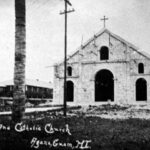
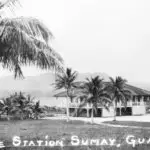
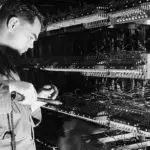
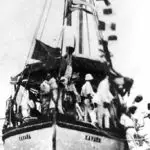
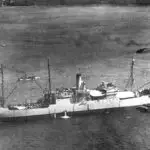
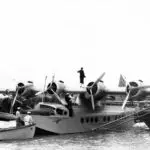
Opening up to the outside world
Guam made huge strides in improving telecommunication and transportation throughout the 20th century under American rule. A myriad of modern vehicles fill island streets. Almost every house has a television and a telephone and many have computers and internet as well. It is a common sight to see people talking or texting on their cellular phones.
A majority of goods used on island are imported, brought to the island by large commercial ships that pull into and off-load cargo at Guam’s seaport. Other goods are brought in by cargo planes. Many Guam residents are frequent fliers on commercial aircraft and travel the world. Consistent mail delivery is an expectation. People can hear, watch or read about daily and world events on a variety of radio stations, television shows and newspapers or by searching the Internet, in addition to other options.
All this is a far cry from yesteryear when when the most common mode of transportation was by foot or carabao-drawn wooden carts. At the dawn of the 20th century only a few Model T-Ford cars chugged through Guam’s capital of Hagåtña. Television was only introduced in the mid-1950s. News and communication were relayed by a single US Navy-controlled publication or more commonly via word of mouth. Information was brought to America’s westernmost possession by sea-going vessels before the completion of an undersea commercial telegraph cable in 1903. More than 7,000 miles of cable lines were laid on the ocean floor between Guam and Midway completing the encirclement of the globe by cable. Sumay was selected as a way station in Guam. The first telephone contact with the outside world was made more than 30 years later on 16 May 1936.
Postal mail, brought by ships, took several weeks or even months to arrive on island. The mail service, however, improved when Pan Am Clippers began making commercial passenger and mail flights across the Pacific in the 1930s, thus further opening Guam to a new era.
The flow of imported consumer goods into Guam improved when the civilian government was given control of the commercial port of Guam in 1951. This was part of a larger transfer of authority with the establishment of the island’s civil government post-Organic Act passage. Before this time, the port had been under US Navy control. In 2008, approximately 100,000 shipping containers passed through the Jose D. Leon Guerrero Commercial Port; Port Authority of Guam at Cabras Island.
In the early years of US Naval rule (the 20th century) news from the outside world was provided by a US Navy-controlled publication. In 1949, Joseph Flores, a CHamoru/Chamorro, bought the Navy-run paper and began the first of locally-produced media outlet. Today there are several private English-language and non-English newspapers, magazines, radio stations, broadcast media companies and the World Wide Web providing news and entertainment for public consumption.
